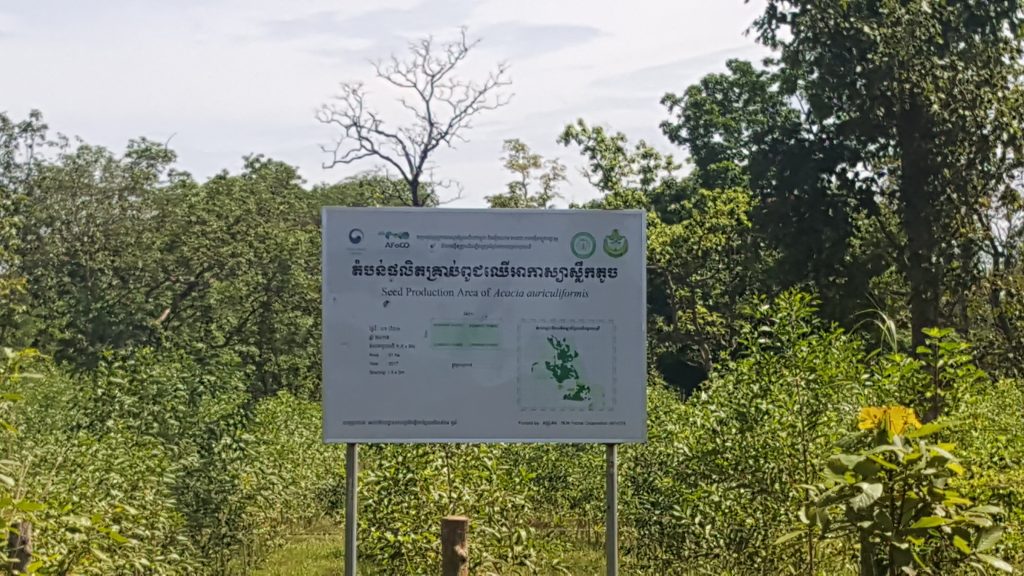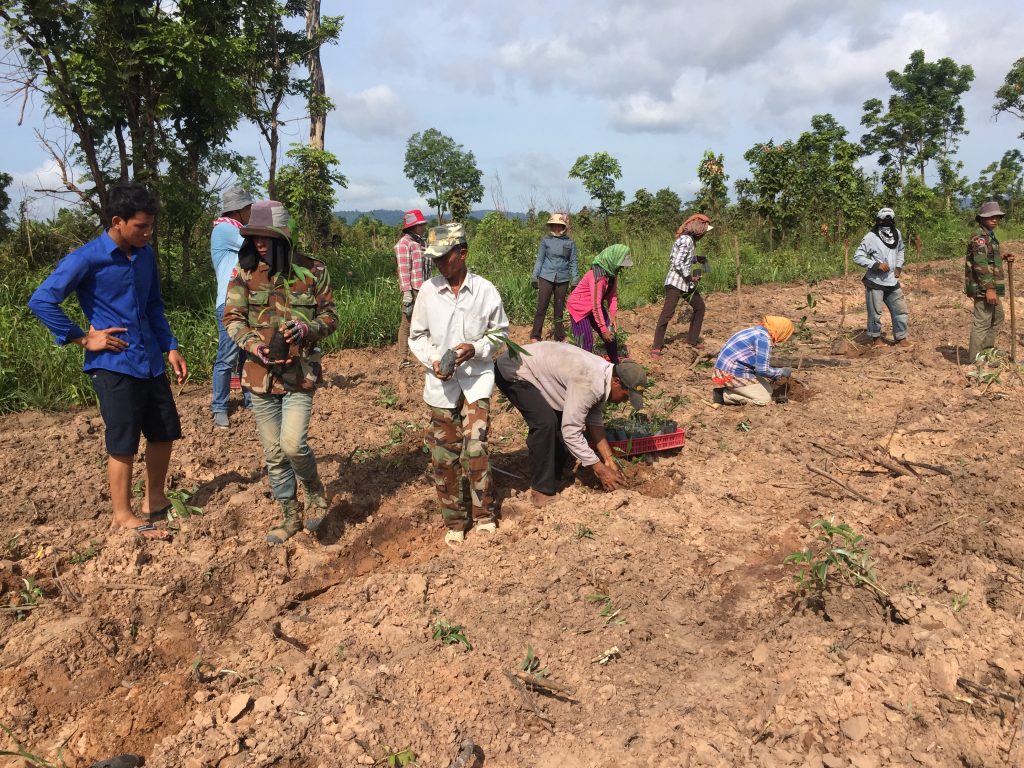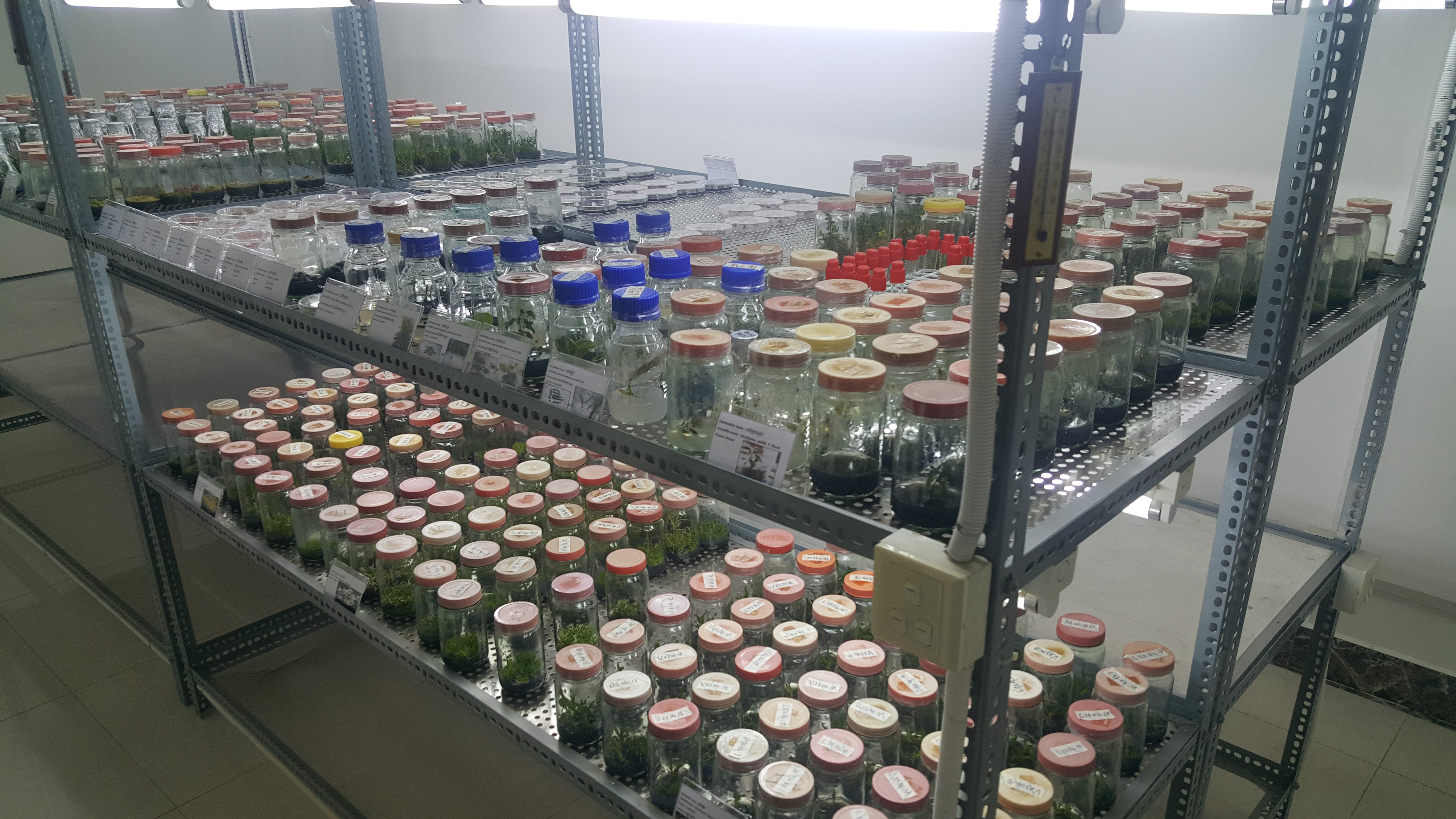This article briefly highlights some of the achievements and outputs of the project on ‘Promotion of Forest Rehabilitation in Cambodia & Viet Nam through Demonstration Models & Improvement of Seed Supply System’, which was completed in 2019.
Background
The global community has been actively promoting activities related to recovering forest areas in hopes of keeping Earth green and healthy. Forest landscape restoration has become an area of interest of communities at all levels — an optimistic outlook for the environment sector. At the international level, there a number of initiatives that aim to restore forest areas. The Bonn Challenge, for example, is a global goal of restoring 350 million hectares of degraded and deforested landscapes by 2030.
At the country level, there are endeavors to fight forest depletion and degradation. Forest restoration and rehabilitation programs have been mainstreamed in national policies and strategies to involve the relevant ministries and agencies and achieve more tangible outputs.
The Cambodia National Forest Programme (2010-2029) sets objectives and goals in developing and managing forests to improve livelihoods, environmental services, and economic development. It includes targets to establish 500,000 hectares of high-value commercial plantations and distribute 10 million tree seedlings every single year. Likewise, the Viet Nam Forest Development Strategy (2006-2020) set objectives in managing, developing, and using forest sustainably and effectively to meet the basic demands nationwide, while ensuring the conservation of biodiversity. It sets tasks to enrich 0.5 million hectares and afforest 2.5 million hectares. These ambitions, however, require tangible solutions and strong political commitment. Ecologically, it always varies from place to place and, sometimes, is a very complex one. Socioeconomically, it links to local livelihoods, stakeholders, and development activities, among others. Implementing agencies down the line also need to identify the practical ways that reap sustainable benefits for local communities.
AFoCO’s Project
Forest restoration and rehabilitation is one of the key areas of focus of AFoCO, which prioritizes addressing regional as well as international concerns related to forest cover losses and climate change. AFoCO’s focus on forest restoration and rehabilitation will help accelerate the establishment of forest restoration models that are suitable in local contexts while building capacities of relevant stakeholders to develop and maintain these models.
The Institute of Forest and Wildlife Research and Development of Cambodia (IRD) and the Research Institute for Forest Ecology and Environment of Viet Nam jointly implemented a regional project, ‘Promotion of forest rehabilitation in Cambodia and Viet Nam through demonstration models and improvement of seed supply system (AFoCO/003/2014)‘, which was supported by the Korea Forest Service through AFoCO during its five-year implementation period from 2015 to 2019. The regional project aimed to promote reforestation and rehabilitation of degraded forests in Cambodia and Viet Nam by initiating a tree seed supply and distribution system to improve tree seed collection and nursery practices, and make quality seeds readily accessible to seed users and forest restoration practitioners.
Quality Seed Sources
Implementing the forest restoration program, Cambodia and Viet Nam faced a common challenge: the lack of qualified seed sources. Despite previous efforts, there remains a limited number of seed sources and tree species. The lack of well-maintained transportation infrastructure and seed distribution systems also increased the likelihood of ungerminated seeds and unhealthy seedlings.
AFoCO’s project supported the activities that the two countries encountered as an important foundation of restoring forests in a timely manner. Using high-quality seeds from identified parent trees assures improved survival and greater product yield.
-
Seed production area of Acacia auriculiformi in Cambodia -
Planting activity in Cambodia
Through the project, Cambodia has identified and established 15 seed sources, mostly located in natural forests. The seed sources were selected based on location, diversity, and availability of parent trees as well as desired species. More than 20 timber species that are considered as valuable and are in high demand in markets across the nation as well as in neighboring countries were identified. The project also identified more than 10 seed suppliers who are actively involving in tree seed collection and selling to the market in the country. Most of these suppliers are community forestry members who play vital roles in the distribution of quality tree seeds and preserving quality germplasms for the next generation of forests. Through the project, they were trained to advance their skills and knowledge as tree seed suppliers, while focusing on tree seed quality and genetic diversity, which is important when using germplasms with quality genetic material.
Viet Nam’s seed source development is relatively more advanced. Nonetheless, the quality of seed sources and seedlings remains a major issue. The project helped to improve the quality of seed sources, seedling production, and management in Hoa Binh province and established a model system at the national level. In addition, a series of training courses were conducted to raise awareness and technical knowledge on seed and seedling production, and forest restoration and protection. Some 300 local managers, technicians, forestry extension staff, and local communities attended these trainings.
-
Training on seed quality improvement in Viet Nam
Tree Seed Laboratory & Tissue Culture Laboratory
The success of forest restoration and plantation programs essentially depends on the availability of healthy seedlings which, of course, are germinated from high-quality seeds. Stakeholder capacities in seed development, cleaning, germination, and storage procedures, among others, also determine the success of forest restoration programs.
The project contributed to this perspective by establishing a tree seed laboratory in Cambodia and a tissue culture laboratory in Viet Nam to build capacities in seed research. Government officials were trained to manage and utilize the laboratory facilities. Dedicated to research on seed quality development, these laboratories helped open up more opportunities for related training activities and serve as centers for tree seed storage, seed testing, and the coordination of tree seed distribution.
Cambodia established and equipped the tree seed laboratory in the Institute of Forest and Wildlife Research and Development (IRD) in Phnom Penh. The laboratory has been widely utilized as an avenue for training and study visits, seed storage, seed testing, and coordinate seed sales. One outstanding IRD staff member was trained to advance her skills in tree seed and laboratory management as part of a short-term training program in the Republic of Korea.
In Viet Nam, the project facilitated the establishment and operation of a tissue culture laboratory in Hoa Binh Province. The laboratory is equipped with advanced equipment as well as maintained and managed by trained staff. Establishing a tree seed laboratory is not only to address these challenges but also to share lessons learned to support further research and accelerate forest restoration efforts.
-
Tree Seed Laboratory in Cambodia -
Tissue Culture Laboratory in Viet Nam
Forest restoration & rehabilitation models
In addition to improving the quality of seed sources, the establishment of standard models of forest restoration and plantation that are suited to local conditions is another important issue that should be prioritized. To establish such demonstration sites, research and studies must be carried out to assess and understand local conditions. Once established, these demonstration sites can be used to impart practical planting methods and techniques and applicable technologies to strengthen the capacities of local and central-level officials, members of local communities, students, and researchers.
Cambodia established two demonstration plots in Siem Reap Province. Two existing plots that were established in a completed AFoCO-funded project were also monitored and maintained.
- Direct seeding plot (1ha): under this method, a major degraded land type was put on practice; grassland covered by imperata grass species. The plot demonstrates a low-cost method of forest restoration which can be applied under various site conditions. Seeds of 14 tree species of fast-growing legume and high-value timber species were directly buried in the ground, after seed pretreatment, in rows of 1 m x 1 m spacing. The overall survival rate was over 80% in the second year of seeding.
- High-density planting of mixed species (2ha): the plot was planted with 7,332 seedlings of 26 species of mixed indigenous tree species consisting of high-value timber, pioneer species, fruit trees, resin trees and early flowering trees. The method was also applied on imperata grass land. The result after three years shows that Khaya senegalensis, Delonix regia and Lagerstroemia speciosa have better performance compared to the other species in terms of diameter growth.
Viet Nam established four forest rehabilitation demonstration models in Hoa Binh Province.
- New planting model (5ha): initial assessment demonstrates that the model and species planted are suitable for local conditions.
- Enrichment planting model (5ha): The model was planted with five species of Parashorea chinensis Wang Hsie, Cinamomum iners, Erythrophloeum fordii, Lithocarpus fissus Champ ex Bent, Manglietia conifera Dandy. These species have demonstrated good growth and are considered suitable for forest rehabilitation of the area.
- Agroforestry model (5ha): The models was planted with forest trees (Chukrasia tabularis and Erythrophloeum fordii), multi-purpose trees (Grafted michelia, Canarium tramdenanum and Dracontomelon duperreanum), and fruit trees (Cao Phong oranges and Tan Lac red grapefruit) corresponding to 25%, 25% and 50% of number of trees, respectively. The models were also planted with lemongrass and ginger plants. This model of forest rehabilitation has maximized land productivity and, therefore, benefiting local livelihoods and environment.
- Community-based forest management model (91ha): The community-based forest management plan, the five-year forest management plan and the Community Forest Protection Convention were approved by the Mai Chau District People’s Committee. In addition, a few regulations were also approved for the purpose of managing forest resources sustainably. As a result, the community forest has been well protected, and the community forest management board has been working effectively.
Conclusion
In a nutshell, the project was completed successfully with tangible outputs and outcomes that contribute to the efforts of Cambodia’s and Viet Nam’s Government in implementing their national forest restoration programs. Drawing from the project’s results, Cambodia and Viet Nam are ready to share their experiences and lessons learned, particularly in the development of forest restoration and rehabilitation models, with other countries in the region.
Contributed by Vireak Chhorn, AFoCO Fellowship Official from Cambodia






